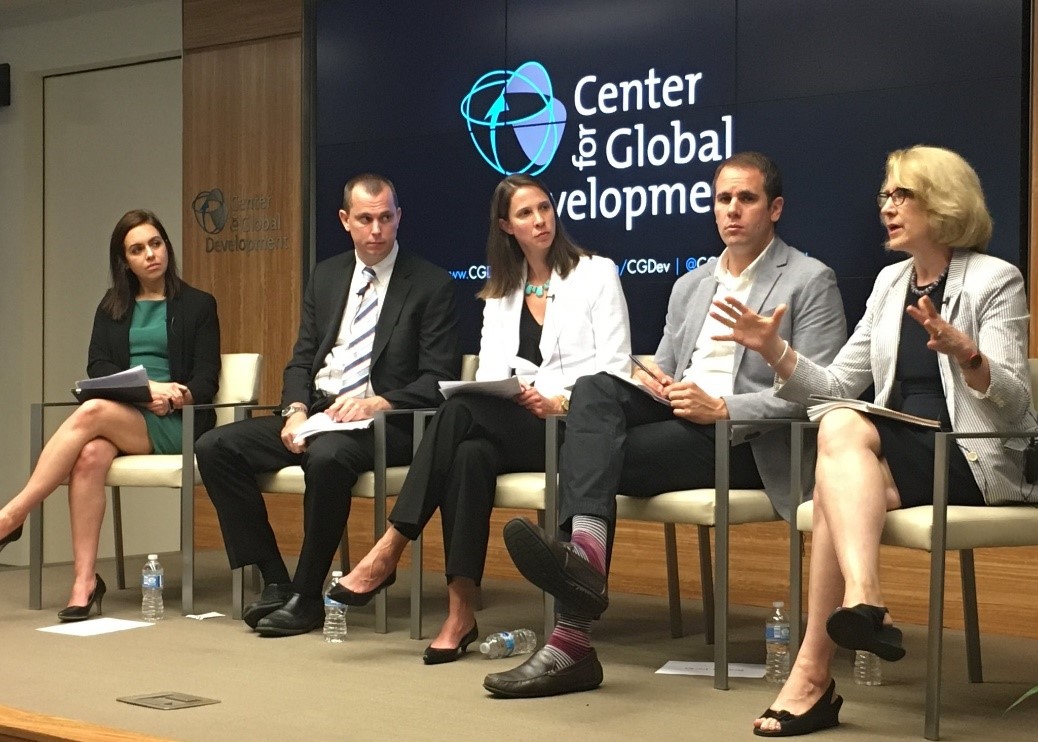Two bills just introduced in the Senate and the House, both called the Economic Growth and Development Act, take on a central challenge in US development policy and programs: lack of collaboration to mobilize private investment among the 12 departments, 26 agencies, and more than 60 federal government offices involved in delivering aid. We lack a strategy and process that make the whole greater than the sum of the parts. While Power Africa aims to bring together the whole toolkit, it is an exception. In this era of intense fiscal strain, we can ill afford inefficiency, weak results, fragmentation, or duplication. The ultimate and optimal solution may turn out to be some merging of agencies and functions. But even with reform of the architecture, it will still be essential to make the gears mesh with less friction.
The bills are timely, practical proposals grounded in two widely agreed imperatives: (1) promoting sustained and sustainable growth as the strongest long-term driver of poverty reduction, and (2) multiplying the force of aid dollars by using them to mobilize private finance for development. At the moment, the US development architecture is not set up to concentrate resources and efforts in the service of either purpose. (There are, of course, other core aid imperatives—such as aid for health and humanitarian purposes.)
The budget for MCC, the only US agency with a singular focus on growth for reducing poverty, is about 3 percent of bilateral US aid. (This excludes US multilateral contributions such as the funding for the international financial institutions that are more focused on growth.) OPIC needs to be bigger and better (e.g., given authority to keep some of its earnings and make equity investments) to mobilize more private finance, as my colleagues have consistently argued.
Why cooperation matters
But the solution is not simply to make MCC and OPIC bigger. To have real impact in making markets and sectors investable, especially frontier markets, it is essential, as I saw repeatedly during my time at MCC, to combine project finance with support for changes in underlying market conditions. Market conditions here encompass a broad range of factors: policies, laws, and institutions; infrastructure; available skills; innovative business models and technologies; and new, or better access to, financial instruments.
Let’s say the United States decides—as a priority for security, development, and humanitarian reasons—to undertake a large-scale rural development initiative in a country or countries in sub-Saharan Africa. Such an initiative would need private as well as public investment. Making agriculture in rural areas investable might ideally require irrigation infrastructure, organization of water user groups, farm-to-market roads, farmer training and organization into producer groups, finance for the producer groups, storage and processing facilities, land titling, renewable energy investment to raise farmer productivity, and microcredit or microinsurance for the famers. No one agency has the tools, expertise, or partners to take on all these activities. But coordinated and coherent efforts across agencies could together achieve the transformative, sustained and sustainable impact that remains so elusive in much of development.
The House and Senate bills seek to knit agencies together by requiring a common strategy for mobilizing private investment; common country, sectoral, and global targets for private investment facilitation and coordination; common diagnostics for the constraints to growth and investment; a common monitoring and evaluation framework; one point of contact with private sector entities interested in partnership opportunities with US aid agencies; and defined roles and responsibilities for each agency involved in meeting targets. These elements taken together would be significant drivers of collaboration and would build on and enhance approaches taken in previous efforts like Power Africa, Feed the Future, and Partnership for Growth.
Two more success factors
But experience demonstrates that there is a tendency for agencies to respond to such requirements by continuing business as usual and focusing their efforts on repackaging existing programs into the new framework in a way that allows them to count as much as possible as contributing to the goals.
Two thoughts on governance and resources may help change that dynamic and incentivize agencies to prioritize collaboration. First, the effort needs a specially designed governance structure. An ordinary interagency process, pulled in many different directions not related to these aims, will not suffice. A strongly empowered public-private finance coordinator should be appointed to work with a purpose-built interagency board of senior development leaders. The coordinator is probably best placed at the National Security Council to elevate the role and avoid capture by any particular agency. The coordinator and the board should be given authority to:
- decide countries of focus based on a set of clear criteria, including country strategic importance, private sector interest, and recipient government willingness to put in place needed policies;
- ensure that the different agency activities fit together in a coherent whole that effectively addresses the identified constraints to growth;
- monitor implementation performance, with the ability to direct and oversee solutions or course corrections that address emerging problems.
Second, the coordinator needs a dedicated pool of grant resources to allocate to different agencies to perform particular functions essential to the overall success of the effort. The pool need not be large. Rather, its purpose is to fill small finance gaps that can unlock larger agency efforts as well as private finance. Such gaps could include funding for growth constraint diagnostics, early project development and due diligence, transaction advisors, or building necessary public-private partnerships. The idea is to incentivize agencies to prioritize this set of activities and give them some of the early-stage resources needed for success.
We should not underestimate the constraints that agencies face under their statutes and in the context of earmarking that limits their flexibility to respond to new mandates. But the valuable proposals in the two bills, reinforced by these suggestions, could motivate agencies to see collaboration as a benefit rather than a burden.
Note: The Senate bill was introduced by Senators Johnny Isakson (R-GA), Chris Coons (D-DE), and David Perdue (R-GA). In the House, the measure was sponsored by Representatives Ted Yoho (R-FL), Adam Smith (D-WA), Adam Kinzinger (R-IL), Bobby Rush (D-IL), Thomas Rooney (R-FL), Keith Ellison (D-MN), and Jared Polis (D-CO).
Disclaimer
CGD blog posts reflect the views of the authors, drawing on prior research and experience in their areas of expertise. CGD is a nonpartisan, independent organization and does not take institutional positions.





